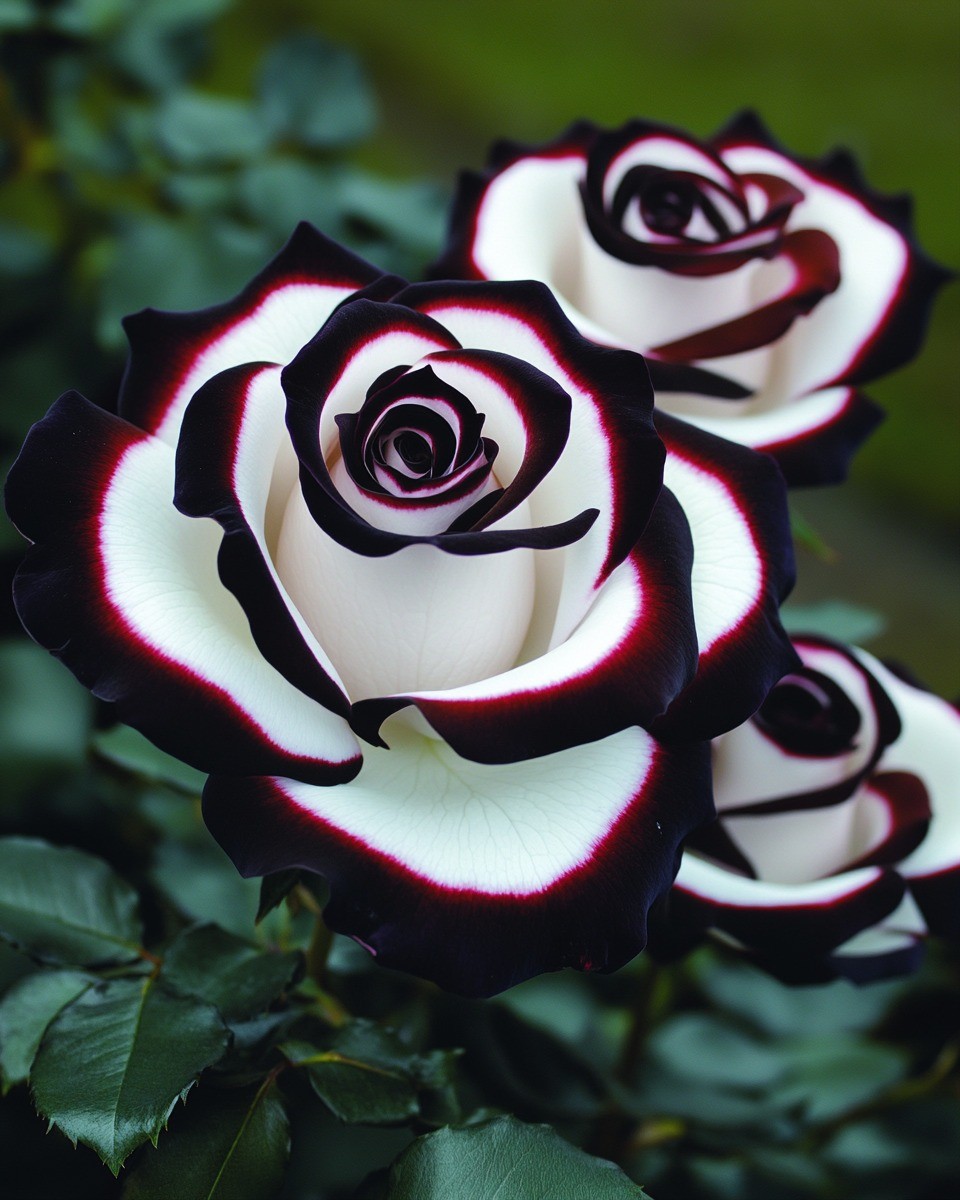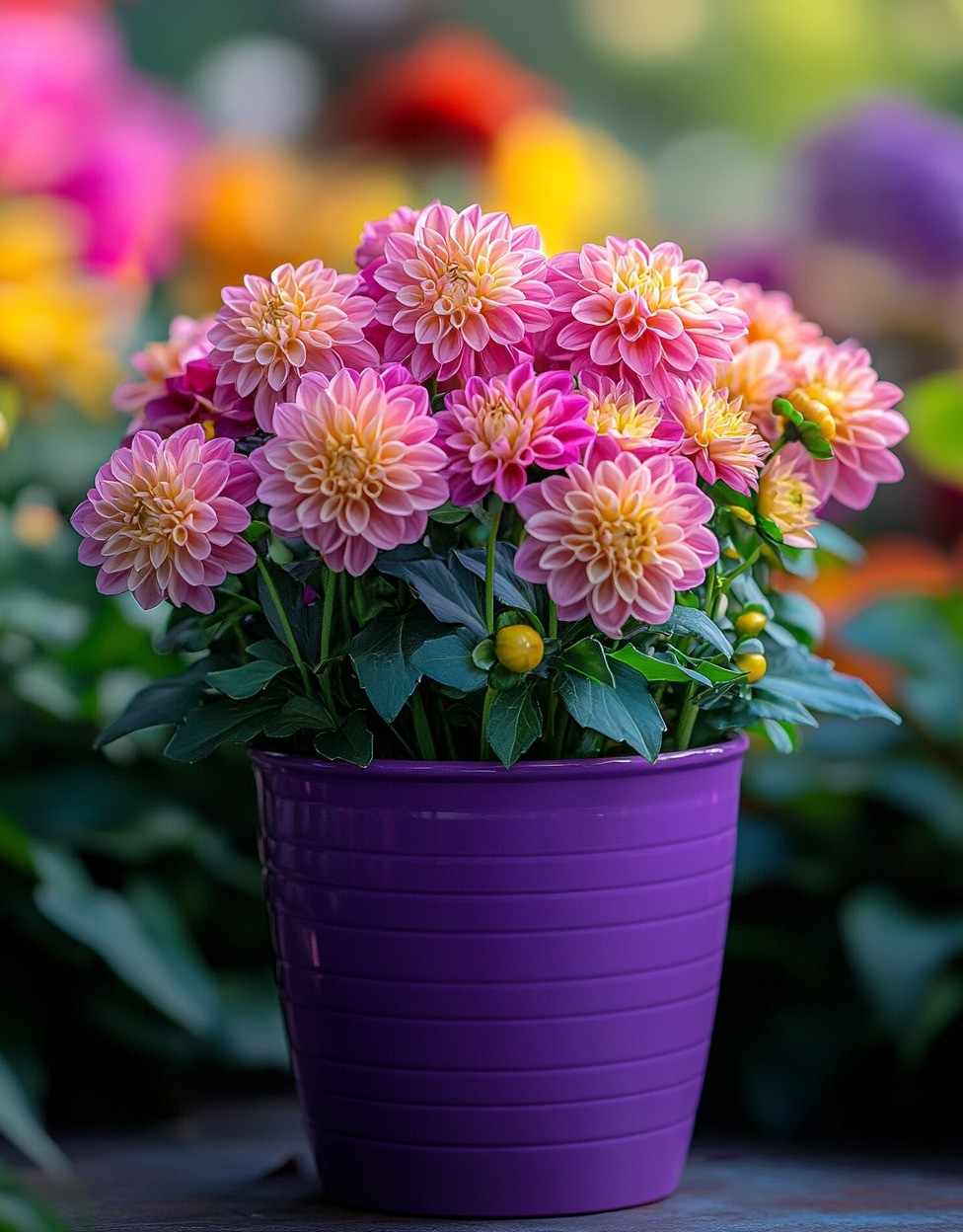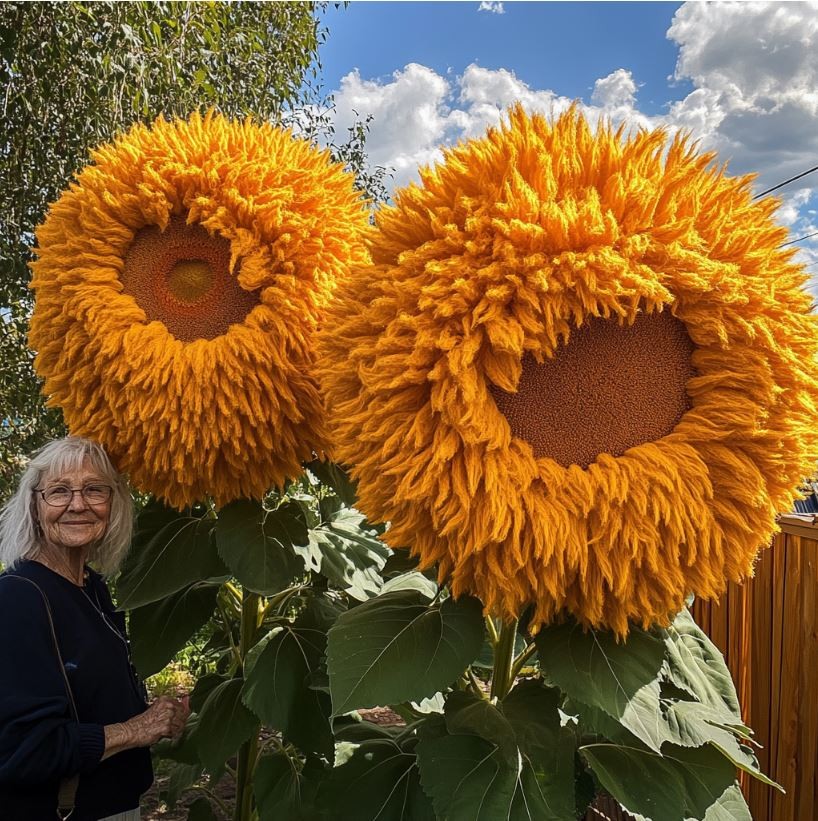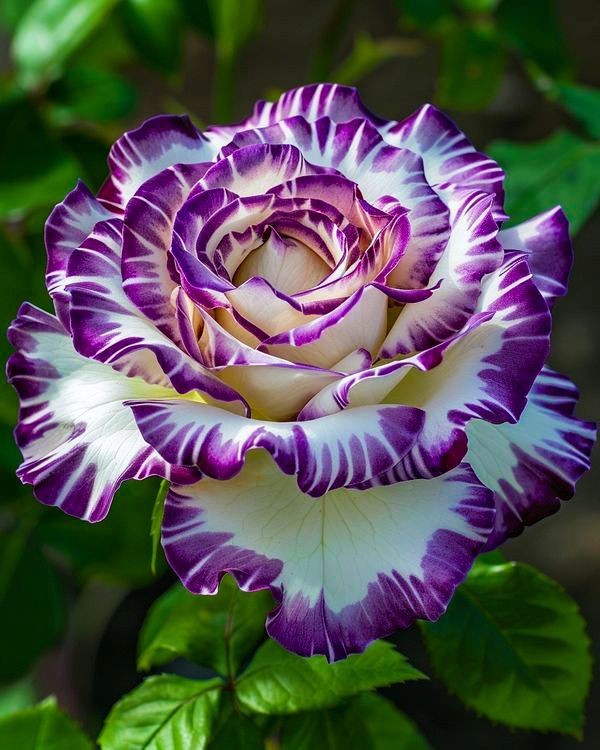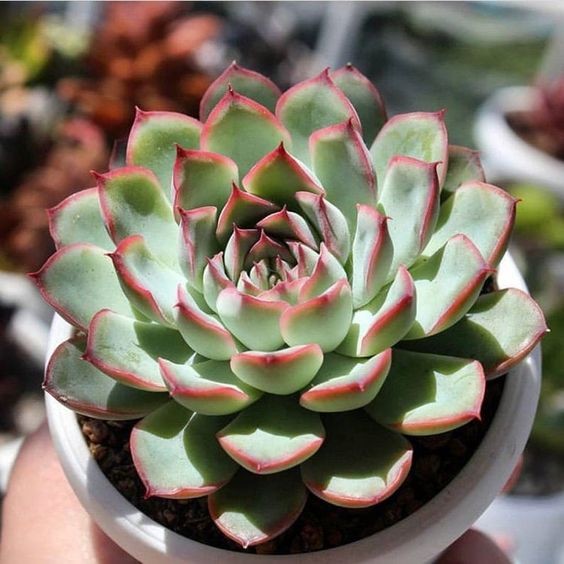Aromatic silver leaves and vibrant blue blooms define lavender, immediately transporting you to the sunlit Mediterranean shores. This iconic perennial shrub thrives in dry gardens, offering fragrant flower spikes in shades of blue, purple, white, and pink. Beyond its calming aroma, lavender buzzes with life in the garden.
Look closely, and you’ll see butterflies and bumblebees darting from bloom to bloom, drawn by the plant’s allure.
Lavender has left its mark on our cultures, shaping our senses and turning vast fields into dreamy purple expanses. From April to October, depending on the variety, lavender’s tufts brighten gardens in perennial beds, standalone displays, borders, rockeries, and sun-drenched terraces. They even thrive in pots, forming vibrant and fragrant hedges.
Lavender belongs to the Lamiaceae family, closely related to sage, thyme, and rosemary. Originating from the sunlit, rocky regions of the Mediterranean and extending to India and Southeast Asia, the Lavandula genus comprises 28 known species and 450 distinct cultivars and hybrids. The main types include include English, French (or Spanish), Portuguese, and lavandin, each varieties with its unique characteristics, fragrances, looks, and care needs.
The real challenge? Picking the right lavender type for your climate and space.
Wondering which lavender to introduce to your garden?
To help you pinpoint the perfect lavender variety that aligns with your garden’s conditions and your preferences, we’ve put together a visual guide We’ve put together a visual guide showcasing the different lavender types as well as the best varieties for each category.
General Lavender Care
While each variety will have its own needs, there are some guidelines you should follow for all lavender:
Sunlight Exposure: Lavender always needs full Sun, which means at least 6 hours of direct and bright sunlight every day.
Humidity: Lavender does not like humid atmosphere; it likes dry regions, and, if summers get wet, it may become moldy and lose fragrance.
Soil: Lavender is very particular about soil:
Pruning: Your lavender will bloom more vigorously of you prune it back in the spring. Only cut back till you see old growth (the branch has become woody). Do not cut the old growth.
20 Favorite Lavender Varieties You’ll Love To Grow In Your Garden
Before I introduce you to my favorite cultivars, you should know that these sun-loving flowering plants are classified by botanists into 5 main types, based on their color, bloom times and hardiness zone of.
Read on to discover 20 of my favorite types of lavender plants, what the plants of a particular variety of lavender look like, when they bloom, and what conditions they thrive in your garden.
English lavender (Lavandula Angustifolia)
English lavender is scientifically called Lavandula angustifolia. It is one of the most common types of lavender also because it is more hardy than other species, and this is why it is called “English”, not because it is original of the British Isles, but because it can grow there.
English lavender has some important characteristics:
Once called Lavandula officinalis (a typical name given to plants used in medicine), there are many varieties of English lavender that have become very common.
1. ‘Hidcote’ English Lavender (Lavandula Angustifolia ‘Hidcote’)
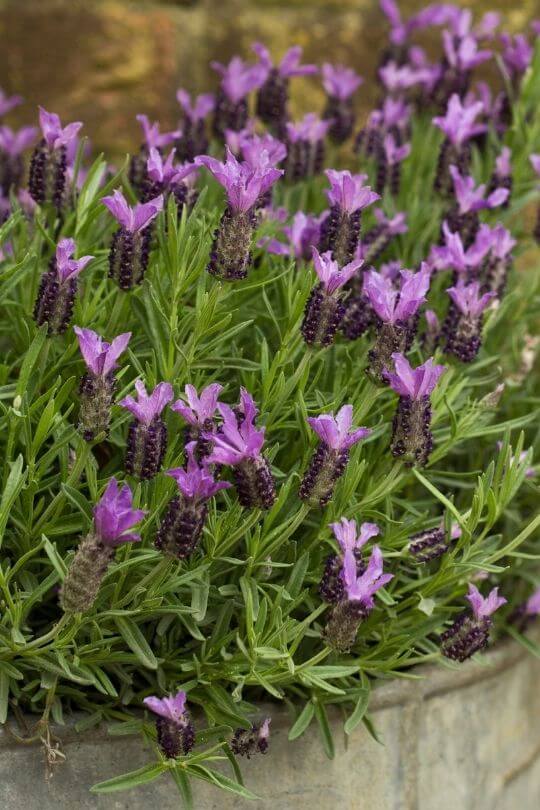
‘Hidcote’ is one of the most popular English lavender types in the world. It has long lasting blooms of dark purple flowers that have an unmistakable and very strong scent.
Unlike other types of lavender, however, it will bloom profusely but only once, from late spring into the early summer.
This is an outstanding plant, winner of the Award of Garden Merit of the Royal Horticultural Society, especially if you want to use it in borders or hedges, but also if you wish to cover slopes, or if you need so dark purple in your flower beds.
Excellent for all types of informal gardens (including city, courtyard and gravel gardens), ‘Hidcote’ lavender will also look and smell great in pots and containers.
2. ‘Alba Nana’ English Lavender (Lavandula Angustifolia ‘Alba Nana’)
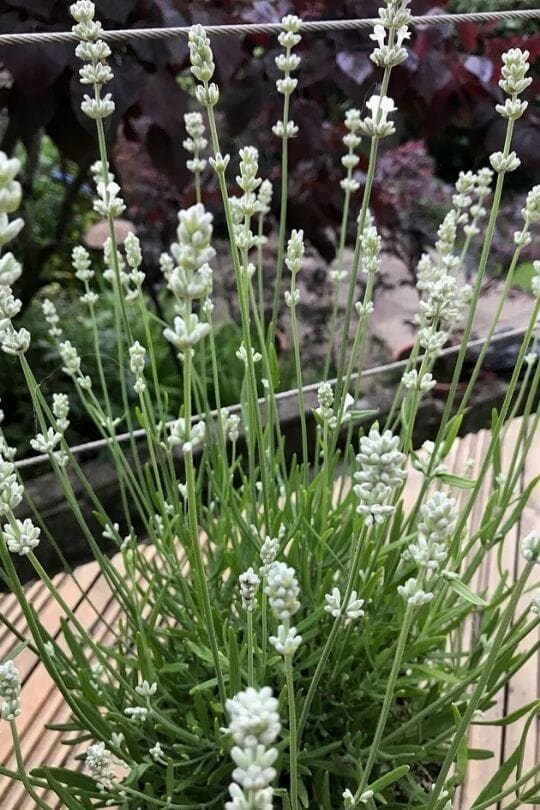
This “dwarf dawn” variety of English lavender (that’s what the name means) will mix its beautiful candid and white blooms with the most soothing scent in the world, and its diminutive size makes it perfect for containers and pots, patio gardens and terraces.
It will also add an unmistakable fragrance to white gardens or rock gardens though, and it too has won the Award of Garden Merit of the Royal Horticultural Society.
3. ‘Munstead’ English Lavender (Lavandula Angustifolia ‘Munstead’)
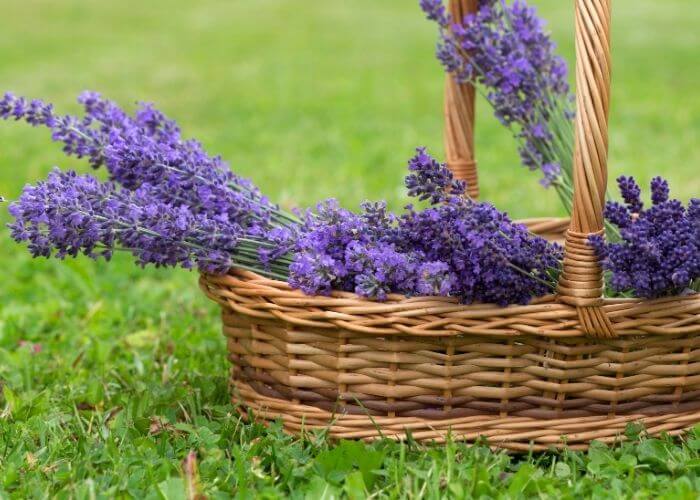
This variety of English lavender has “noble” origins when it comes to gardening, actually, royalty, as it was introduced in 1916 by Gertrude Jekill!
It is a variety of lavender with a compact habit and very well defines flowers with five clearly visible petals whose color is of a light rosy purple shade.
Of course, having heard the name of Gertrude Jekill you will think that this lavender variety is excellent for borders, and it is, but it will also suit rock gardens and herb gardens, which it will enrich with its relaxing aroma.
4. Pink English Lavender (Lavandula Angustifolia ‘Rosea’)
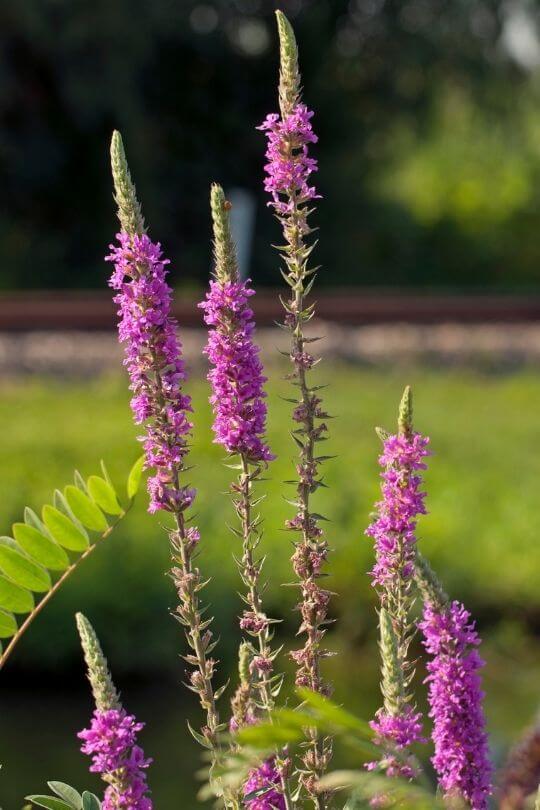
To the strong but calming fragrance of English lavender, this variety, ‘Rosea’ will add an abundance of pale pink (sometimes off white) flowers. It is, in fact, one of the most generous bloomers of the entire lavender genus.
This makes it perfect for romantic hedges and borders, in any type of informal garden.
5. ‘Thumbelina Leigh’ English Lavender (Lavandula Angustifolia ‘Thumbelina Leigh’)
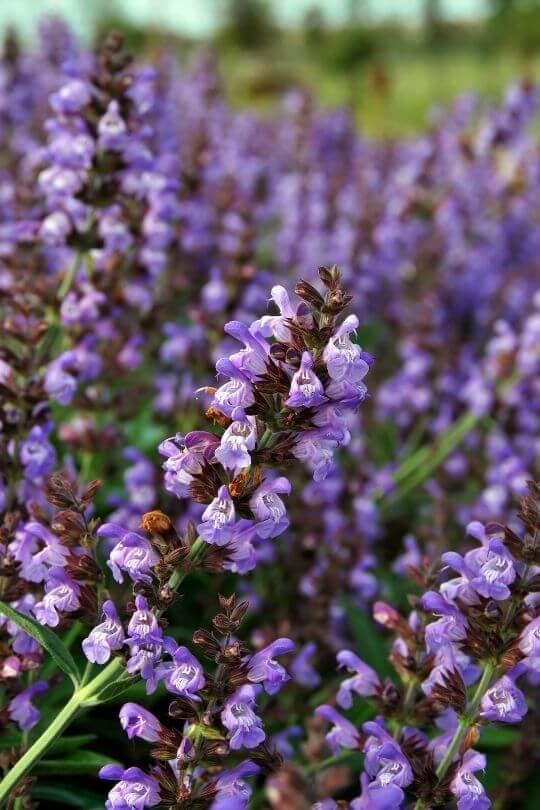
‘Thumbelina Leigh’ is a variety of English lavender with a particular gardening and visual value because the inflorescences are short and thick, made up of fewer flowers than other lavender types.
They will appear at the top of long stems, and will look like violet purple plump plumes high above the foliage.
This makes this lavender mora suitable to even less formal gardens than other types, as it will look less “wild”, and also for containers and flower beds where you wish the blooms to stand out.
6. ‘Folgate’ English Lavender (Lavandula Angustifolia ‘Folgate’)
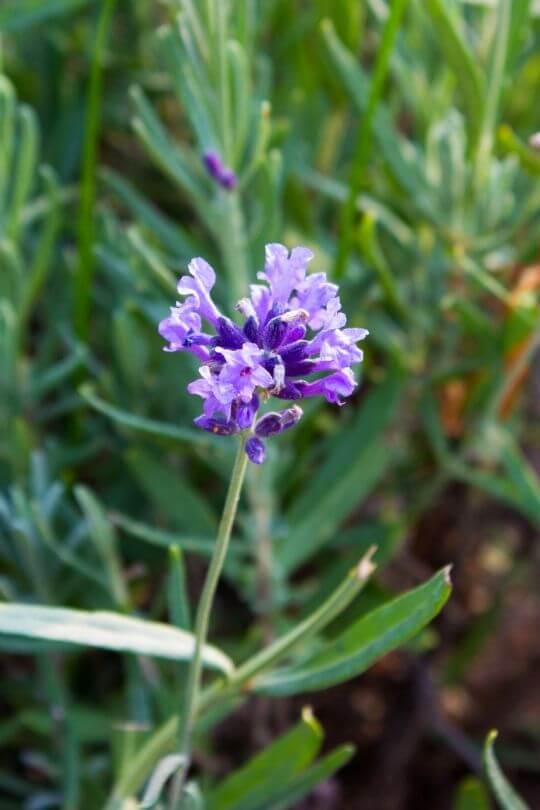
With classical dark purple flowers, this variety of lavender is well known for its generosity and the thick blooms it will produce in spring.
The inflorescences themselves are regular for an English lavender variety, but ‘Folgate’ will grow loads of them!
So, this is an excellent filler of color and scent to borders, hedges, and beds, and a plant you can safely rely upon to light up your garden with a richness of color that can make all the difference.
And that’s maybe why the Royal Horticultural Society gave it the Award of garden Merit in 2012.
7. ‘Little Lottie’ English Lavender (Lavandula Angustifolia ‘Little Lottie’)
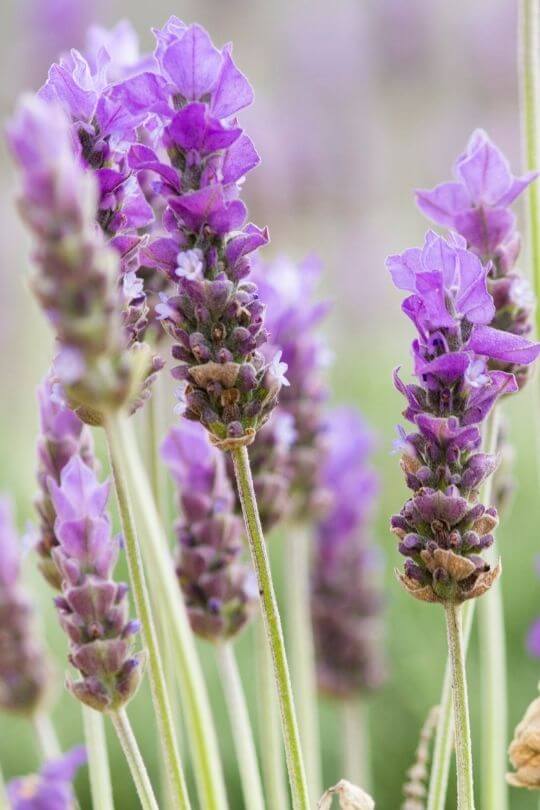
If you want a sweetly cheeky variety of English lavender, ‘Little Lottie’ is a bit “different” from her sisters because the flowers are of two colors: some are white and some light magenta, and they mix in the inflorescences, forming myriad combinations of purity and soft feelings.
This secured the Award of Garden Merit by the Royal Horticultural Society for ‘Little Lottie’ in 2002, and has made her one of the most popular varieties of English lavender for pots and containers.
8. ‘Royal Velvet’ English Lavender (Lavandula Angustifolia ‘Royal Velvet’)
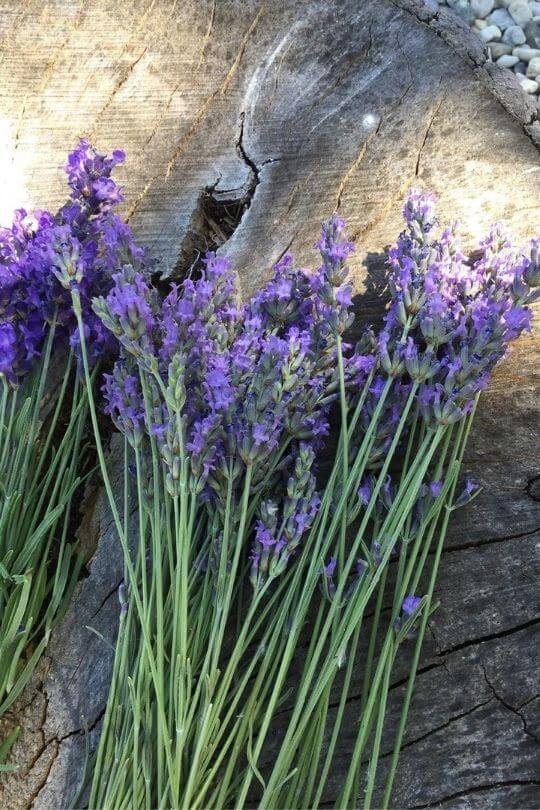
The spikes of this variety of English lavender have an upright habit and they can be 4 inches long (10 cm).
However, what makes ‘Royal Velvet’ stand out is its long lasting deep and dark navy blue to dark violet flowers, which also have a velvety texture.
‘Royal Velvet’ will fill borders, hedges, flower beds and containers with a depth of color and feeling, and a richness of scent like few other flowering plants can do.
French (Spanish) Lavender (Lavandula stoechas)
No country is more associated with lavender than France; in the South of France, in fact, you can literally smell lavender in the streets, not just in those beautiful fields with long rows of perfumed flowers we all see in postcards.
But things are not so easy: Lavandula stoechas usually goes by the common name of French lavender, but in the USA it also called Spanish lavender.
On the other hand, it is common to call Lavandula dentata “French lavender” in the USA, but most commonly known as fringed lavender.
So, we are talking about two species. And here are their characteristics.
On the other hand, fringed lavender, or Lavandula dentata:
9. French Lavender ‘Anouk’ (Lavandula stoechas ‘Anouk’)
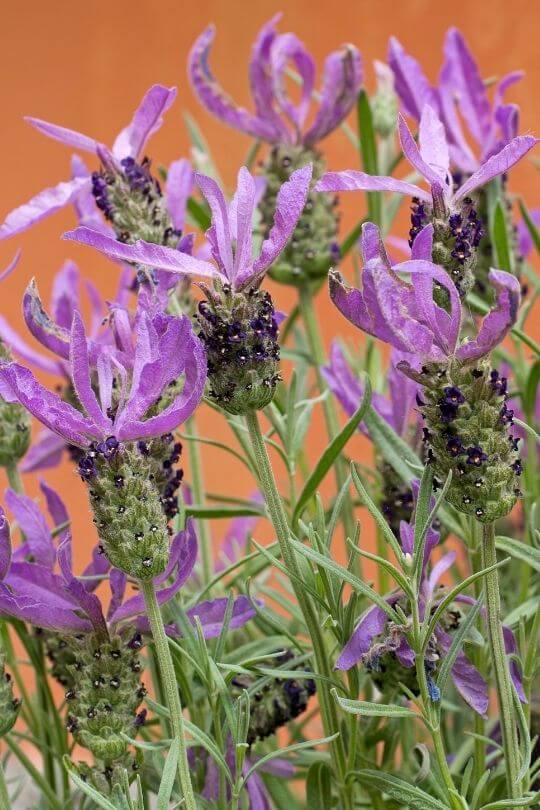
Of all the varieties of French lavender, ‘Anouk’ is (one of) the most showy, as it has very large ears at the top of inflorescences that really make it stand out.
They are of a bright and very beautiful shade of magenta, and they are big enough to see the veins in them.
The stems with the inflorescences have an upright habit, which makes the ears pop out of the foliage like rabbits peaking out of the grass, and the leaves too are aromatic.
It is a very persistent bloomer, perfect for borders, hedges, flower beds but also patios and terraces, and it looks even better when it attracts butterflies!
10. ‘Ballerina’ French lavender (Lavandula stoechas ‘Ballerina’)
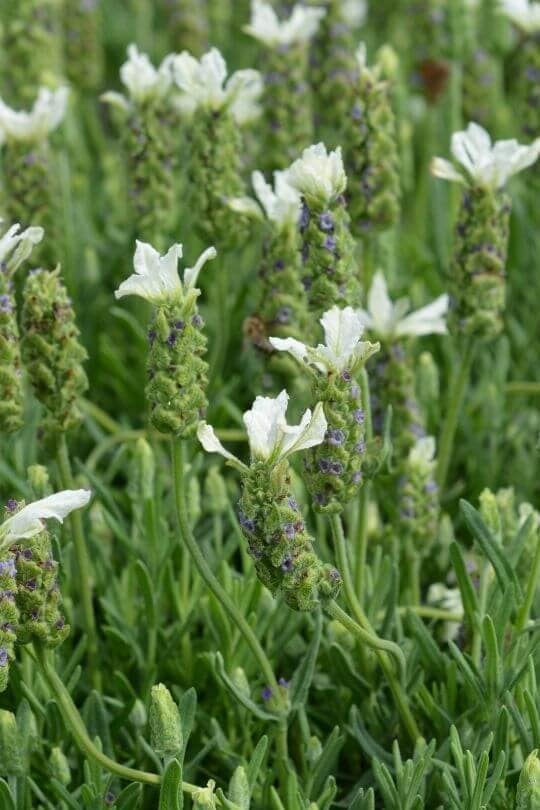
A very showy French lavender variety, ‘Ballerina’ too has upright stems, but they have short and rather plump spikes of deep violet purple flowers and big, elegant white ears on top!
This is the variety you want on your patio or terrace in containers if you wish to wow your guests with a very unusual, yet striking variety of lavender, though it will grow well also in rock gardens, borders and flower beds.
‘Ballerina’ is a winner of the Award of Garden Merit of the Royal Horticultural Society.
11. French Lavender ‘With Love’ (Lavandula stoechas ‘With Love’)
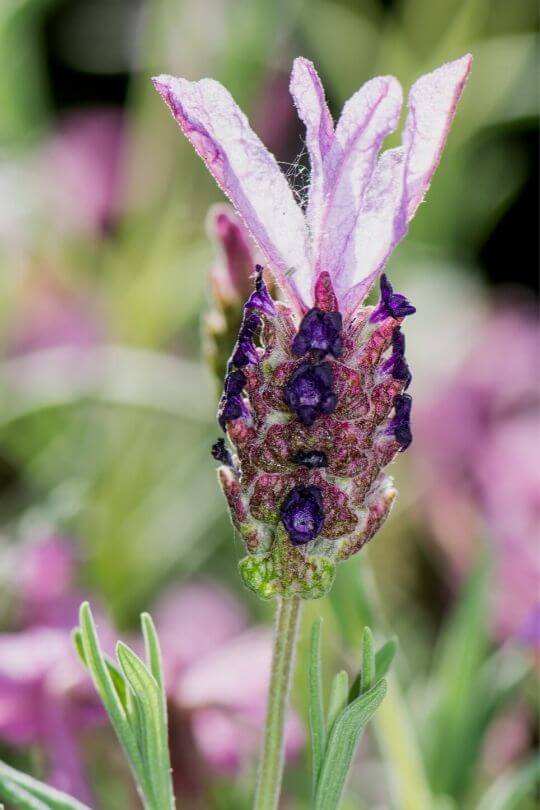
“Elegance” and “class” are the words that spring to mind when you see French lavender ‘With Love”, a beautiful variety with unusually green foliage, then plump and short spikes of a cerise-purple color and ears of the most delicate pink, almost white, with bright magenta veins in them.
Another variety of French lavender to express your originality, either in pots on your terrace and patio or in strongly aromatic flower beds or borders.
12. ‘Regal Splendour’ French Lavender (Lavandula stoechas ‘Regal Splendour’)
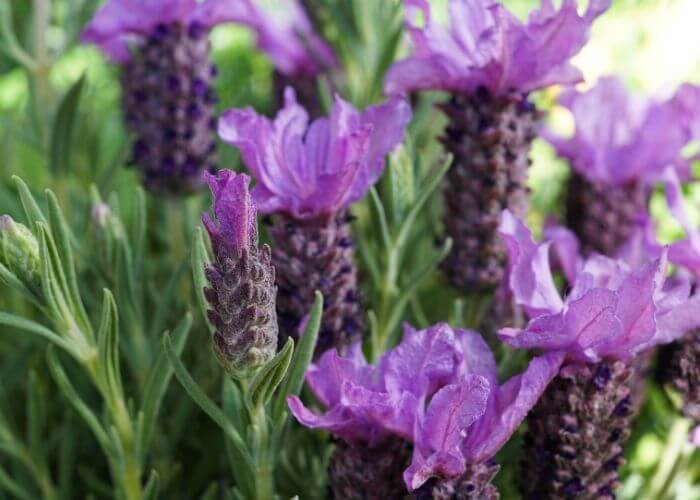
If you want to showcase the elegance of French lavender in pots or containers on your terrace or patio, or if you need a touch of royalty in your borders and hedges, then ‘Regal Splendour’ is what you are after!
This is a variety with thick violet blue spikes and long and upright deep magenta bracts or ears, which look a bit like “fairy crowns” on top of heads among the foliage.
13. ‘Pretty Polly’ French lavender (Lavandula stoechas ‘Pretty Polly’)
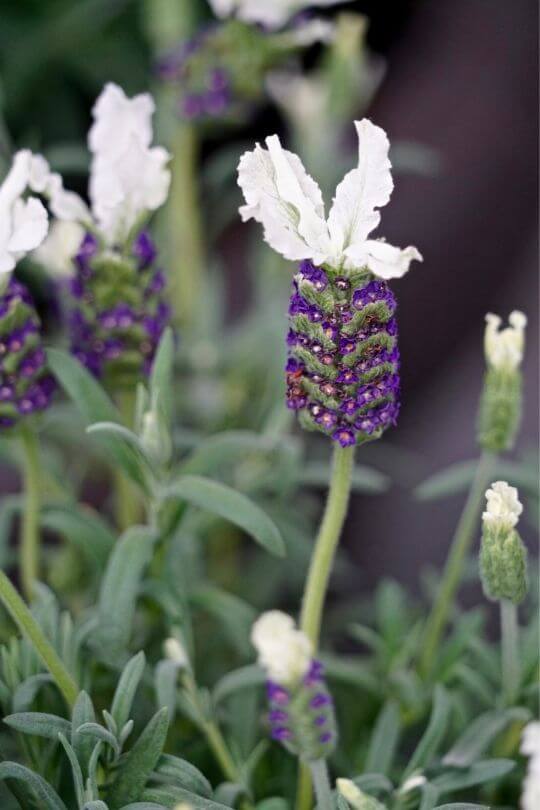
With long white ears on top of spikes with regularly spaced, deep purple flowers with a bright yellow center, ‘Pretty Polly’ has also won the Award of Garden Merit of the Royal Horticultural Society, and you can surely see the value of this very aromatic prize winner both in containers or in your borders or flower beds…
14. Butterfly Lavender ‘Papillon’ (Lavandula pedunculata subsp. pedunculata)
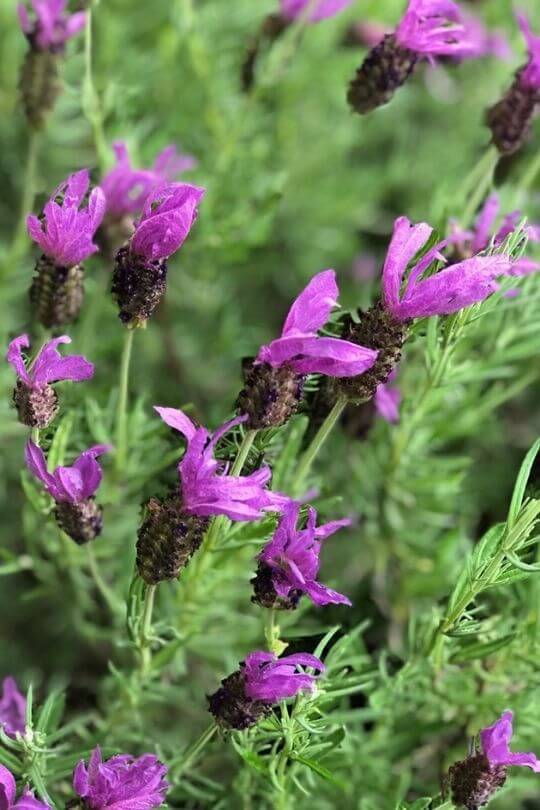
A lesser known species, not belonging to the classical Lavandula stoechas, it has something in common with French lavender, because it too has ears, or bracts, but…
They look very pointy and rebellious, unlike the larger ones of classical French lavender…
So, if you fancy a lavender plant that says, “I am different,” in a subtle way, the small purple spikes with unruly looking magenta ears on top may be what you have been looking for.
Its originality must be why this variety won the Award of Garden Merit of the Royal Horticultural society in 2002.
15. Fringed Lavender (Lavandula dentata)

Although fringed lavender has a weak scent and flowers that are not particularly showy (still beautiful, with purple ears on top), it is much appreciated for the plastic and decorative ribbing (or teeth) of its silver green leaves.
In fact, you can use it to add texture to your beds, borders, hedges or even rock garden or grow it for its foliage (and flowers) in pots and containers.
Portuguese Lavender (Lavandula latifolia)
Broadleaved lavender, spiked lavender or Lavandula latifolia is also known as Portuguese lavender. Despite its many names, it is one species only.
It is a type of lavender that comes from the Mediterranean, known for its scent and aromatic properties, but if you grow it, keep it separate from English lavender (Lavandula angustifolia). This is necessary for two reasons:
What are the characteristics of Portuguese lavender?
16. Portuguese Lavender (Lavandula latifolia)
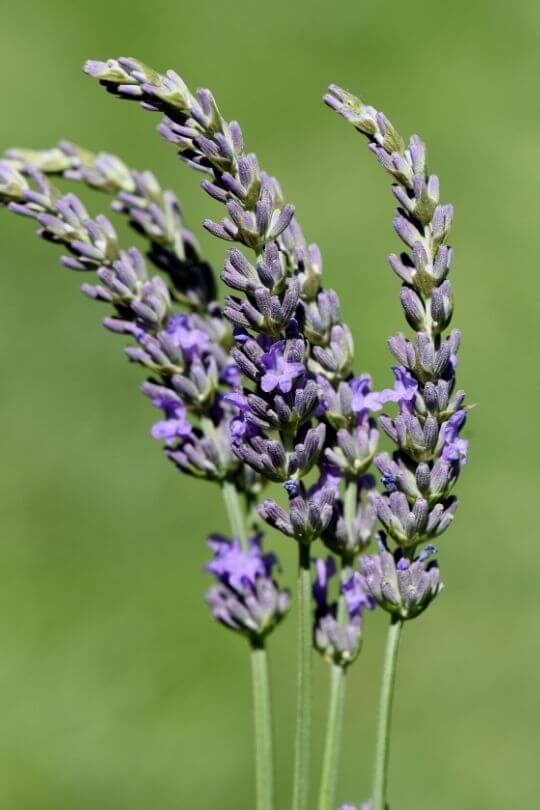
With typically purple flowers in regular spikes, the inflorescence of Portuguese lavender is very elegant if not showy individually. The shrubs, however, will form large clumps of silver green leaves with purple spikes growing upright in the middle, and arching on the sides.
It is a very generous plant that can be naturalized easily or used in informal hedges, borders or flower beds, where it will bring a classical lavender look, which can be made to appear very natural indeed.
Lavandin (Lavandula x intermedia)
Lavandin, the most fragrant lavender plant is actually a hybrid plant, Lavandula x intermedia, and it is what you obtain crossing English lavender with Portuguese lavender (Lavandula angustifolia with Lavandula latifolia) it can occur naturally, as we have seen, or don e by growers, botanists and gardeners.
This type of lavender too has some particular characteristics:
17. ‘Provence Lavandin’ (Lavandula x intermedia ‘Provence’)
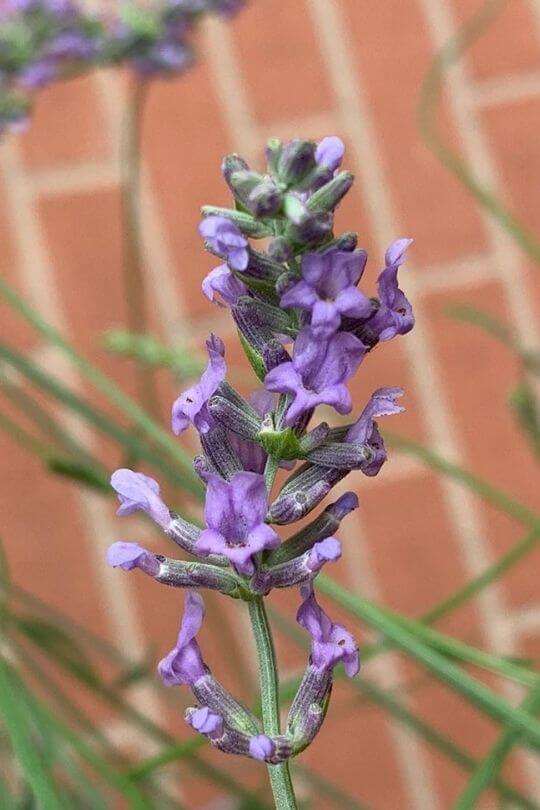
Provence is, in all the world, the region we most associate with lavender, so, what better name for a classical-looking variety than the name of this land?
The flower heads are quite big, 3 inches long (8 cm), and of a deep violet purple shade, and they loom stunning even when they are in bud.
If you do not live in a very dry region, ‘Provence’ may be your best choice, as it is well known for being the best variety for humid summers.
So, even if you do not live in sunny Spain, you too can have the beauty and scent of lavender in your birders or hedges.
18. ‘Grosso’ Lavandin (Lavandula x intermedia ‘Grosso’)
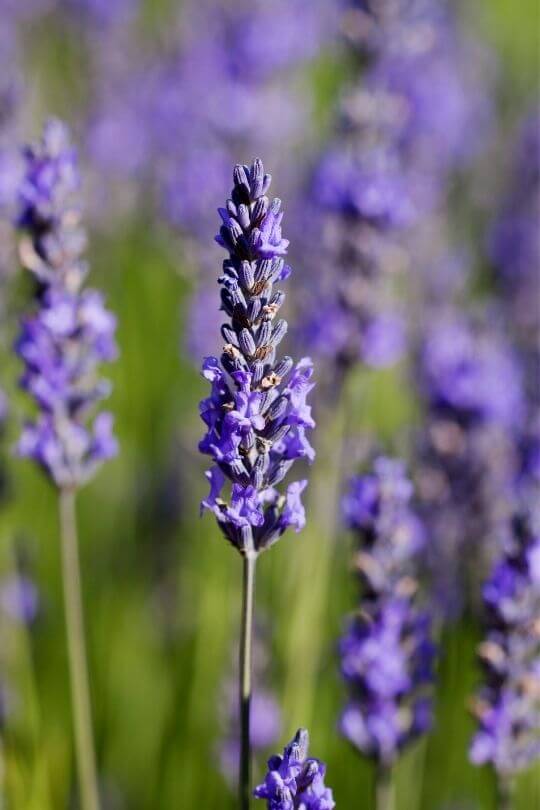
A wonderful plant to cover slopes very fast, as it os a fast and vigorous grower, lavandin ‘Grosso’ also has very long spikes of flower (6 inches long, or 15 cm) of that typical violet shade we associate with lavender.
Despite being ha strong plant, its habit is quite elegant, with many long stems growing side by side but in a fairly sparse way, so as never to give the idea of a “crammed” shrub, which will add a touch of elegance and harmony to your garden.
19. ‘Phenomenal’ Lavandin (Lavandula x intermedia ‘Phenomenal’)
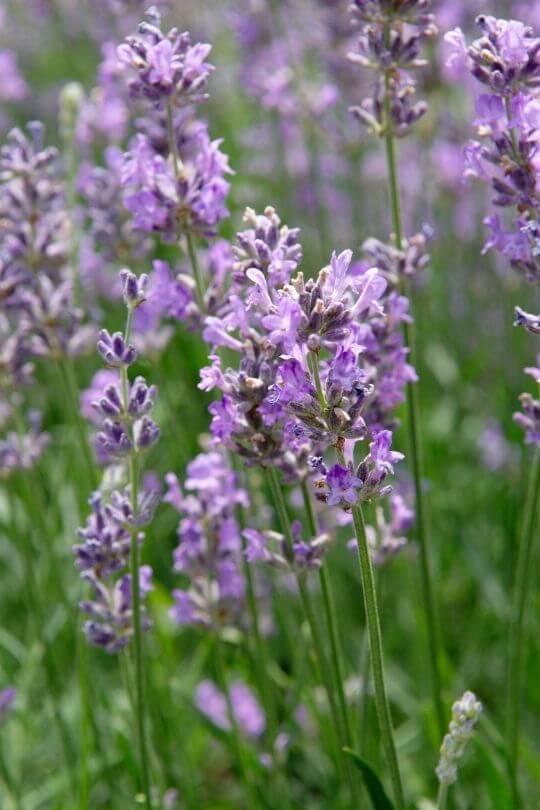
If you want a dense, rich and luxurious effect in your garden, have a look at ‘Phenomenal’ lavandin, which, on top of most fragrant lavender plant, will give you a deep vibrant violet purple hue and a thick shrub with many flower spikes.
20. ‘Hidcote Giant’ lavandin (Lavandula x intermedia ‘Hidcote Giant’)
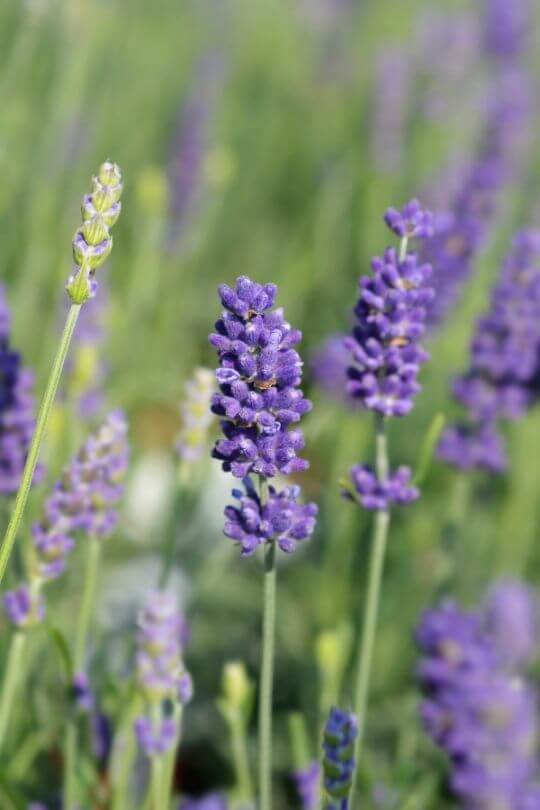
Unusual for a lavandin variety, ‘Hidcote Giant’ has a very big, plump and thick spike of magenta to violet purple flowers that can actually be showy individually.
The whole spike reaches about 4 inches in length, which is 10 cm.
A very decorative cultivar that adapts well to city and courtyard gardens as well as patios or containers, and which looks less “naturalized” and more “garden center” and urban than other lavandin varieties, ‘Hidcote Giant’ won the Award of Harden Merit if the Royal Horticultural Society in 2002.
Lavender Is Indeed the Plant of Dreams…
English, French or Spanish, Portuguese or lavandin, lavender is a special plant. It can turn whole fields into oases of peace and beauty; it is the all time favorite of pollinators, and this alone makes her special among plants…
It creates seas of beauty and color and, well placed in your garden, it can turn it into a hazy but glittering dream…
Maybe it is thanks to its intoxicating scent, maybe that galaxy of purple flowers…
with lavender, really, the divide between waking and sleeping becomes blurred, and with her, we all slip off into a fantastic, light and peaceful world of dreams…

Written By
Amber Noyes
Amber Noyes was born and raised in a suburban California town, San Mateo. She holds a master’s degree in horticulture from the University of California as well as a BS in Biology from the University of San Francisco. With experience working on an organic farm, water conservation research, farmers’ markets, and plant nursery, she understands what makes plants thrive and how we can better understand the connection between microclimate and plant health. When she’s not on the land, Amber loves informing people of new ideas/things related to gardening, especially organic gardening, houseplants, and growing plants in a small space.
